Faculty of Economics University of Zagreb Celebrates 100 Years
ZAGREB December 5, 2020 – With over 9000 students currently enrolled, the Faculty of Economics University of Zagreb is the largest faculty in Croatia. In 2020, this internationally renowned institution celebrates its 100th birthday, so TCN decided to take a closer look.
Every other student you meet in Croatia seems to study economy. It makes you wonder where they all go to after their studies are complete. Are there really so many positions for economists in Croatia?
In 2020, the Faculty of Economics University of Zagreb celebrates its 100th birthday. The long list of its famous former students gives a clue to where all the Croatian economists go – the tourism sector, diplomacy and international relations, business, politics and government.
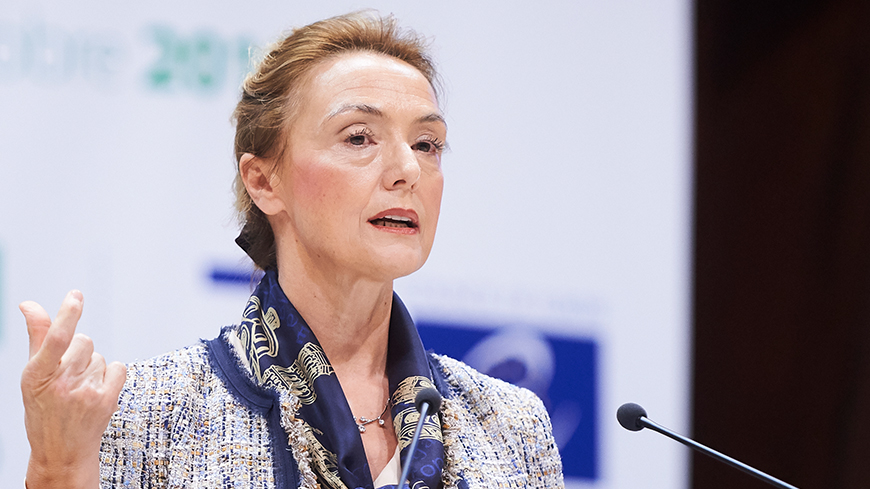 Marija Pejčinović Burić, a graduate of the Faculty of Economics of the University of Zagreb and the current Secretary General of the Council of Europe. After graduating, like Savka Dabčević-Kučar, she became o doctor of economics and before taking her current position served as Croatia's Deputy Prime Minister and Minister of Foreign and European Affairs © Council of Europe
Marija Pejčinović Burić, a graduate of the Faculty of Economics of the University of Zagreb and the current Secretary General of the Council of Europe. After graduating, like Savka Dabčević-Kučar, she became o doctor of economics and before taking her current position served as Croatia's Deputy Prime Minister and Minister of Foreign and European Affairs © Council of Europe
Graduates of the Faculty of Economics University of Zagreb have served as mayors of Zagreb and Split, Deputy Prime Minister of Croatia, Minister of Finance, Minister of the Economy, Secretary-General of the Council of Europe, Governers of the Croatian National Bank, Vice-President of the UN World Food Council, President of the Croatian Football Association, Minister of Environmental and Nature Protection, special advisors to the President of Croatia and countless university professors, including several former rectors of the University of Zagreb. Within its graduate professors, it has produced no less than 19 full members of the prestigious Croatian Academy of Sciences and Arts, more than any other single institution in the country.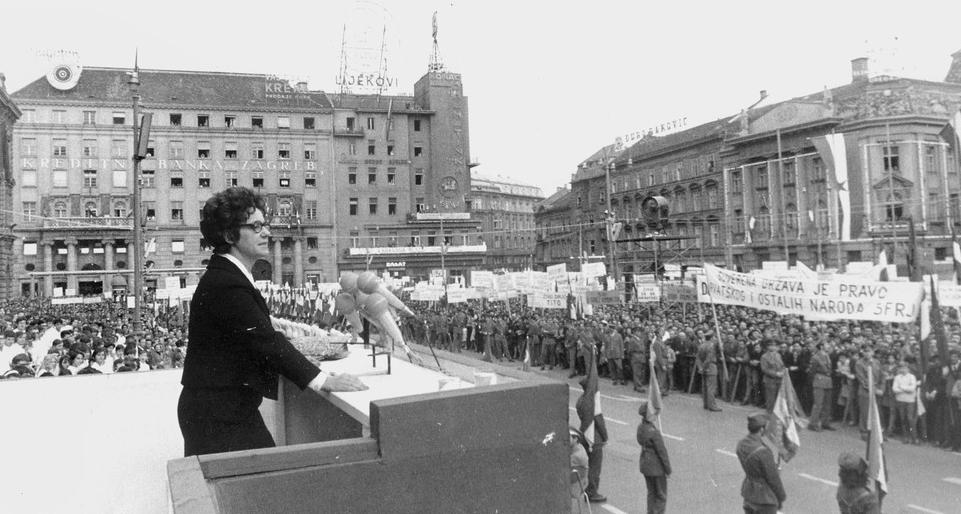 Savka Dabčević-Kučar, a graduate of the Faculty of Economics of the University of Zagreb. Born on Korčula, she became an anti-fascist in World War II, joining the partisans after her brother was beaten by fascists. After graduating, she continued to study at the faculty and became one of the first doctors of economics in Croatia, raising eyebrows by choosing to write her doctorate dissertation about a non-Marxist economic theorist (Englishman John Maynard Keynes). She became a professor at the faculty in the 1950s and despite her great advances in political life, remained a committed teacher at the faculty until 1971. In 1967, she was elected President of the Socialist Republic of Croatia. In 1969, she moved to an even more important position - that of president of the Central Committee of the League of Communists of Croatia. She was the first woman in Europe to be appointed head of government of a political entity and the first female in Croatia to hold an office equivalent to a head of government. In this picture, she addressed supporters on Ban Jelacic Square Zagreb during the movement called the Croatian Spring, which called for greater autonomy for Croatia. At the address, thousands cheered her as “Savka, queen of the Croats”. For her pivotal role in the movement, she was removed from her positions and public life and retired. She returned to politics in 1990 upon the collapse of communism in Europe and during the Croatian war of independence was one of the few politicians who visited the front lines of battle in Slavonia, Petrinja, Pokupski and the Dalmatian hinterland
Savka Dabčević-Kučar, a graduate of the Faculty of Economics of the University of Zagreb. Born on Korčula, she became an anti-fascist in World War II, joining the partisans after her brother was beaten by fascists. After graduating, she continued to study at the faculty and became one of the first doctors of economics in Croatia, raising eyebrows by choosing to write her doctorate dissertation about a non-Marxist economic theorist (Englishman John Maynard Keynes). She became a professor at the faculty in the 1950s and despite her great advances in political life, remained a committed teacher at the faculty until 1971. In 1967, she was elected President of the Socialist Republic of Croatia. In 1969, she moved to an even more important position - that of president of the Central Committee of the League of Communists of Croatia. She was the first woman in Europe to be appointed head of government of a political entity and the first female in Croatia to hold an office equivalent to a head of government. In this picture, she addressed supporters on Ban Jelacic Square Zagreb during the movement called the Croatian Spring, which called for greater autonomy for Croatia. At the address, thousands cheered her as “Savka, queen of the Croats”. For her pivotal role in the movement, she was removed from her positions and public life and retired. She returned to politics in 1990 upon the collapse of communism in Europe and during the Croatian war of independence was one of the few politicians who visited the front lines of battle in Slavonia, Petrinja, Pokupski and the Dalmatian hinterland
The Faculty of Economics University of Zagreb is the largest faculty in the country. Over its 100 year history, it has established itself as an internationally respected institution. Today, it has around 9000 persons enrolled, caters for international students with some courses in English and has produced over 86, 000 graduates, including 856 doctors of science.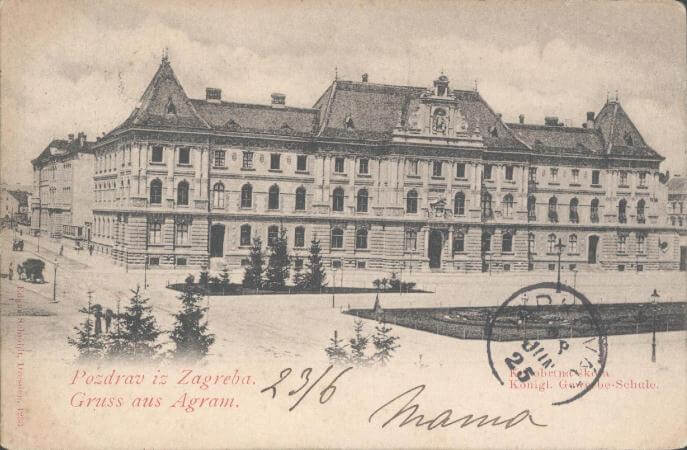 In its infancy, students of the College of Trade and Transport were taught at the Technical College, which is today the Museum of Arts and Crafts in Zagreb © National and University Library in Zagreb
In its infancy, students of the College of Trade and Transport were taught at the Technical College, which is today the Museum of Arts and Crafts in Zagreb © National and University Library in Zagreb
The history of the Faculty of Economics University of Zagreb starts with the opening in 1920 of its forerunner, the Zagreb College of Trade and Transport. Its purpose was to educate in the areas of banking, domestic and international trade, transport, consular services, insurance and the education of teachers. Its courses lasted three years and it proved so popular that in the academic year 1923/24, some 1,125 students were enrolled.
The institution held college status until 1925 when Stjepan Radić became the Minister of Education. It must have been unusual for Radić to find himself as part of the government of the Kingdom of Serbs, Croats and Slovenes, the state which preceded the Kingdom of Yugoslavia. Today, Radić is best remembered as a politician outspoken in his advocacy of autonomy for Croatia. Before his appointment to the government, he had always done so in opposition. Indeed, he had been imprisoned several times for his views, which were proclaimed loudly in his writings or in person (he was a gifted public speaker). As recently as March 1925 he had been in prison but, when the political party of which he was a member officially recognised the monarchy and the state constitution, he was freed. In a remarkable turnaround, before the year's end, he was a minister in the government.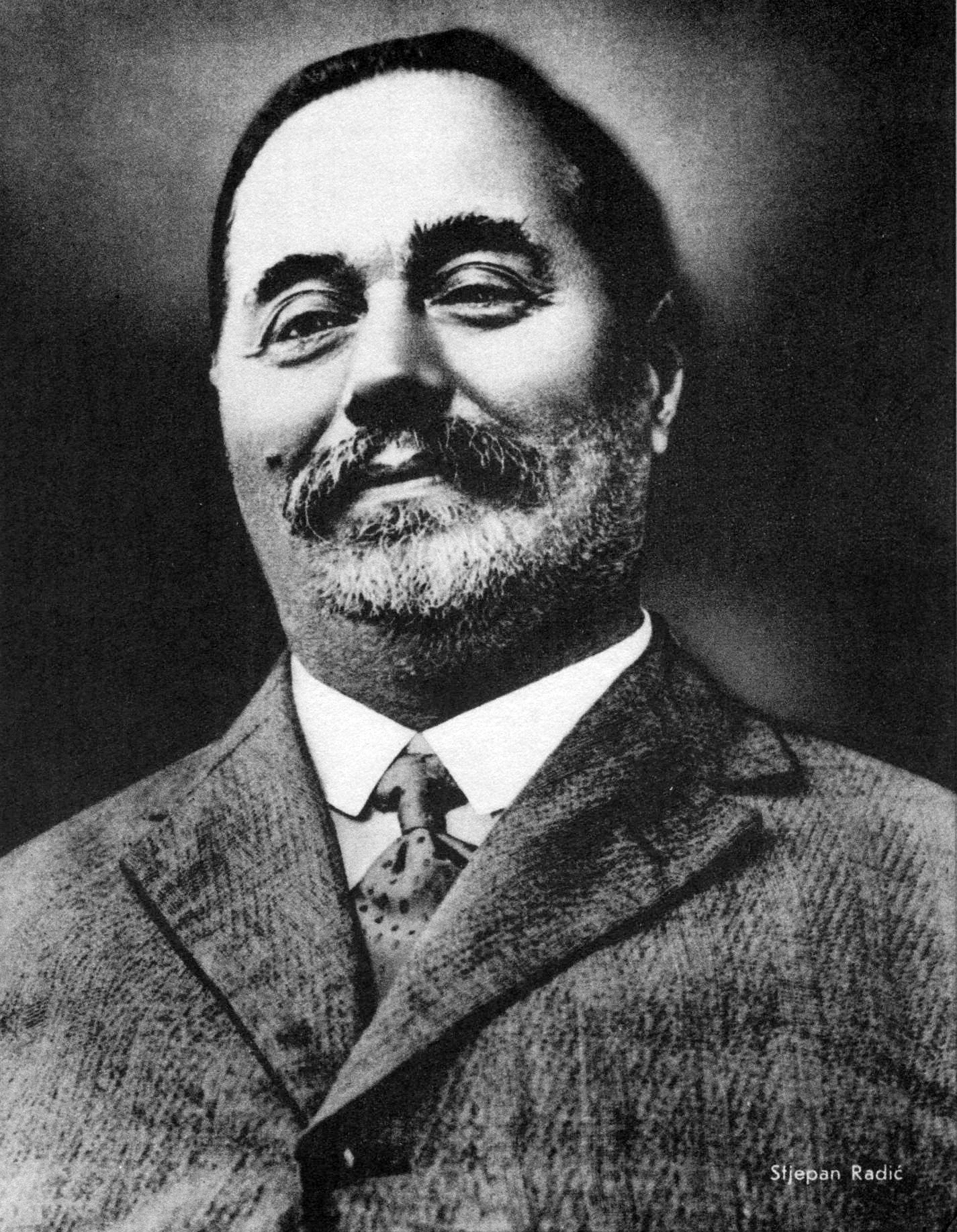 Stjepan Radić, pictured in the 1920s © public domain. In 1895 Radić was sent to prison for the public burning of the Hungarian flag in Zagreb – alongside Antun Dabčević, the father of Savka Dabčević-Kučar.
Stjepan Radić, pictured in the 1920s © public domain. In 1895 Radić was sent to prison for the public burning of the Hungarian flag in Zagreb – alongside Antun Dabčević, the father of Savka Dabčević-Kučar.
Stjepan Radić's desire for Croatian autonomy was not born from the ideals of the political class of Zagreb. The ninth of eleven children, born to a peasant family in a small village on the banks of the Sava river, just north of Sisak, Radić was very much a representative of the people whence he came. To him (and others in his family – his brother and nephew also being prominent politicians), education had the most important role to play in emancipation. He had lived in poverty in order to complete his own - after being banned from university-level educational institutions throughout the whole of the Austro-Hungarian empire for his protests against the state, he travelled penniless to Russia, France and Switzerland to complete his studies. In the latter, finance was one of his chosen subjects.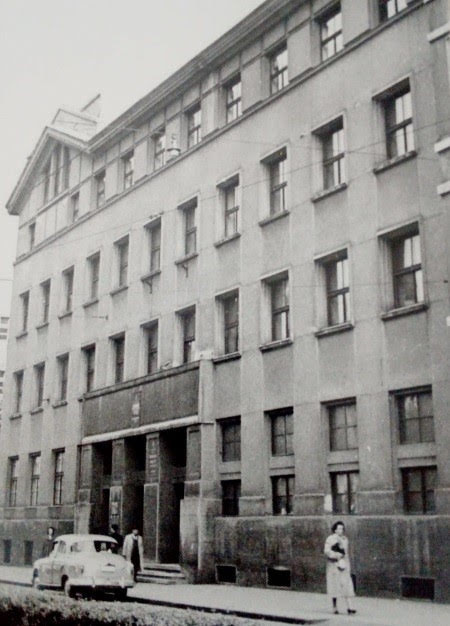 The first dedicated building of the Higher School of Economics and Commerce was located on the corner of Bauerova and Zvonirmirova © Faculty of Economics University of Zagreb
The first dedicated building of the Higher School of Economics and Commerce was located on the corner of Bauerova and Zvonirmirova © Faculty of Economics University of Zagreb
Under Radić's spell in office, the Zagreb College of Trade and Transport became the Higher School of Economics and Commerce. Its courses extended to four years, it attained university status. With no building designated to the increasingly popular institution, students had sometimes been taught at the Technical College (today's Museum of Arts and Crafts) and in parts of what is now the Mimara Museum. A dedicated home for the faculty was authorised and its construction started in 1927. Classes began at the faculty, located on the corner of Bauerova and Zvonimirova, in 1928, but within the decade the institution had outgrown its home and a plot of land in Svetice was acquired in order to build a new, larger facility. Its construction was interrupted by the Second World War and students would end up being taught on the Bauerova and Zvonimirova site all the way up to 1952.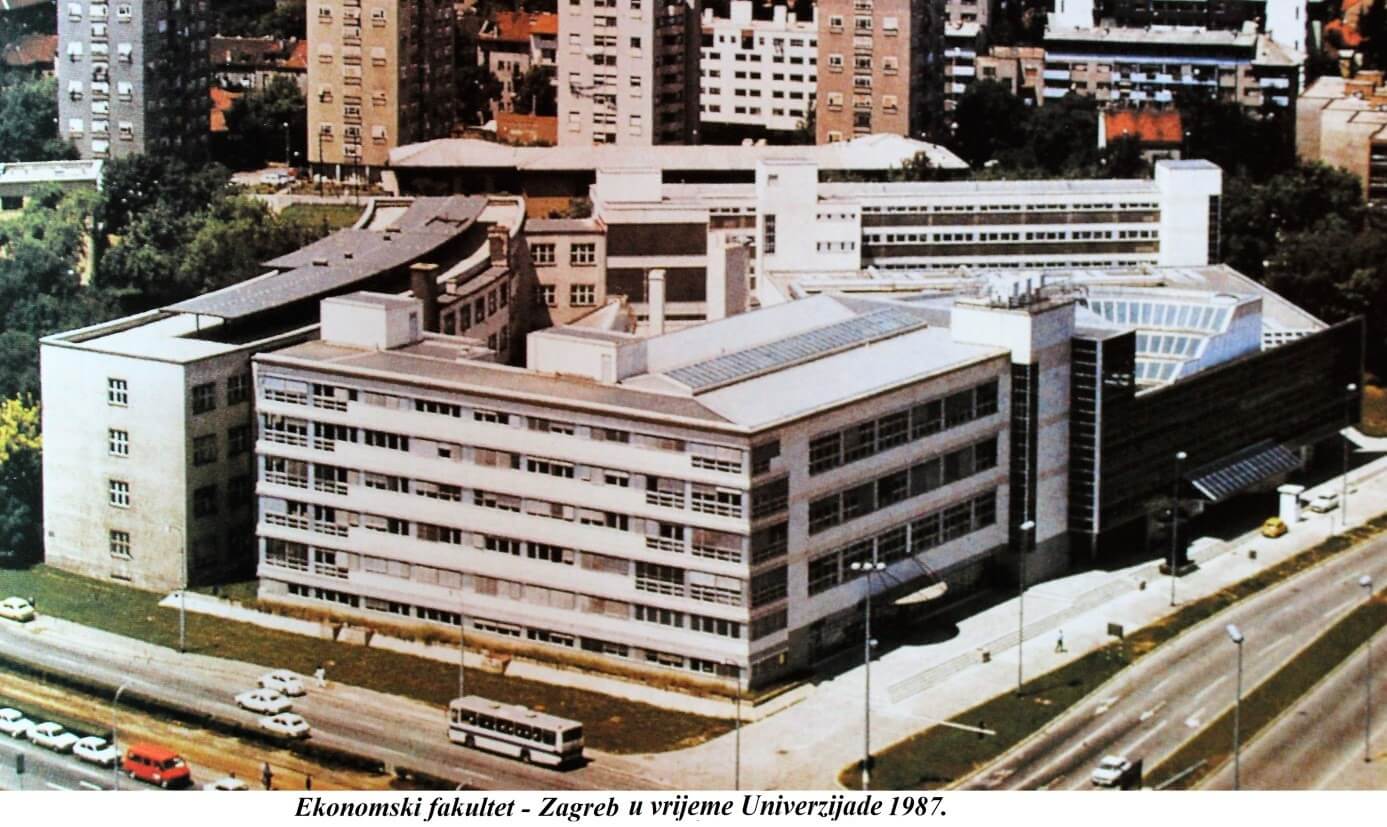 The faculty's modern building, pictured in 1987. Today, the faculty has 17 departments - Finance, Demography, Economic Theory, Business Economics, Informatics, Macroeconomics and Economic Development, Marketing, Mathematics, International Economics, Business in Foreign Languages, Organization and Management, Law, Accounting, Statistics, Trade and International Business, Tourism, Physical Education and Health © Faculty of Economics University of Zagreb
The faculty's modern building, pictured in 1987. Today, the faculty has 17 departments - Finance, Demography, Economic Theory, Business Economics, Informatics, Macroeconomics and Economic Development, Marketing, Mathematics, International Economics, Business in Foreign Languages, Organization and Management, Law, Accounting, Statistics, Trade and International Business, Tourism, Physical Education and Health © Faculty of Economics University of Zagreb
In 1947, the Higher School of Economics and Commerce became the Faculty of Economics University of Zagreb. In 1952, the faculty officially moved to the new site in Svetice. In 1968 it expanded once more when it merged with the 12-year-old College of Economics. Since then, the building at Svetice has received major upgrades and further facilities of the faculty can now also be found at the university campus in Borongaj, in Varaždin, in Koprivnica and in Bjelovar. After a century of existence, the Faculty of Economics University of Zagreb's longstanding difficulties to meet the popularity of its courses with the space available are now over. Not only can they accommodate every Croatian economy student who makes the grade, but they are also able to offer places to some of the best international students. It would surely come as no surprise if they are still educating the future elites of business, banking, finance and politics in another 100 years.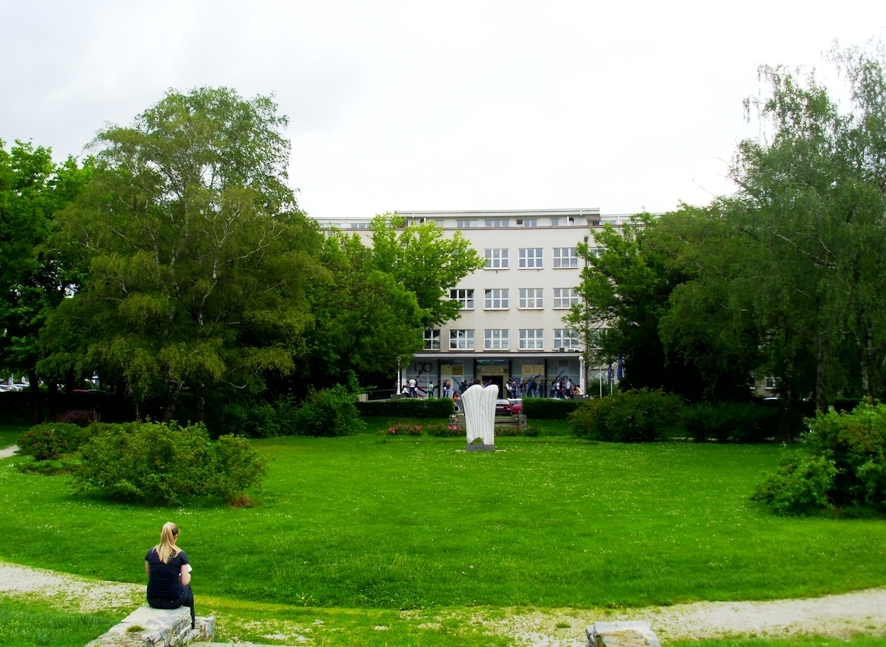
The Faculty of Economics University of Zagreb site in Svetice, as seen from its garden © Wolf - Pidgeon
Global Terrorism Index 2020: Croatia is a Completely Safe Country
ZAGREB December 2, 2020 – Croatia is a completely safe country, according to the latest figures from the Global Terrorism Index
According to the Global Terrorism Index, Croatia is a completely safe country. Their findings are reported annually by the Institute for Economy and Peace. In their most recent report (published late November 2020), from the year beginning 2018 and ending in 2019, Croatia scored an index rating of 0.0 on the impact of terrorism. This means that, in regards to the threat of and the fallout from terrorism, Croatia is a completely safe country.
In the report, terrorism affects most the citizens of three countries: Afghanistan, Iraq and Nigeria. Terrorist groups are powerful and active in these three nations. On a daily basis, they affect and change the lives of all the people who live in these countries, particularly those who inhabit larger population centres.
The situation is particularly tragic in Afghanistan (with an index rating of 9.5). 41% of all fatal victims of terrorist globally live in that one country alone. The second country most-affected on the list is Nigeria with 9%. Afghanistan and Nigeria were the only two countries which each suffered more than 1,000 deaths from terrorism.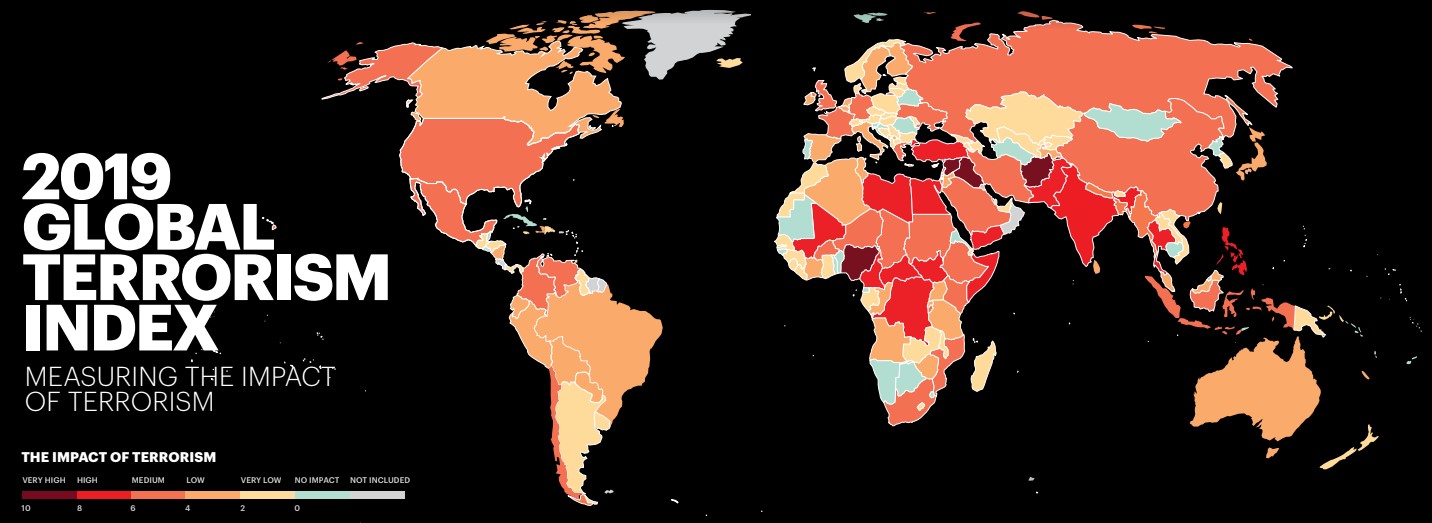 A map showing the impact of terrorism globally. The figures were compiled in a one year period between 2018 and 2019, published as an annual report in late November 2020 © Institute for Economy and Peace (IEP)
A map showing the impact of terrorism globally. The figures were compiled in a one year period between 2018 and 2019, published as an annual report in late November 2020 © Institute for Economy and Peace (IEP)
Globally deaths from terrorism fell for the fifth consecutive year in 2019 to 13,826, a 15 per cent decrease from the prior year. The peak of deaths from terrorism occurred in 2014 and this coincides with the high point of influence of the Islamic State of Iraq and the Levant (ISIS or ISIL). The figures from 2019 show a decrease of 59% since then.
A total of 63 countries recorded at least one death from terrorism in the most recent report. Although dismal reading, this is in fact the lowest number of countries to have reported such since 2013.
The global economic impact of terrorism was US$16.4 billion in the twelve-month period covered by the report, a decrease of 25 per cent from the previous year. However, the true economic impact of terrorism is much higher as these figures do not account for the indirect impact on business, investment, and the costs associated with security agencies in countering terrorism.
ISIS (or ISIL)'s centre of activity has been shown to have moved to sub-Saharan Africa in the period. Total deaths by ISIL in the region have increased by 67%. ISIL and their affiliates were also responsible for attacks in 27 countries in the year period ending 2019.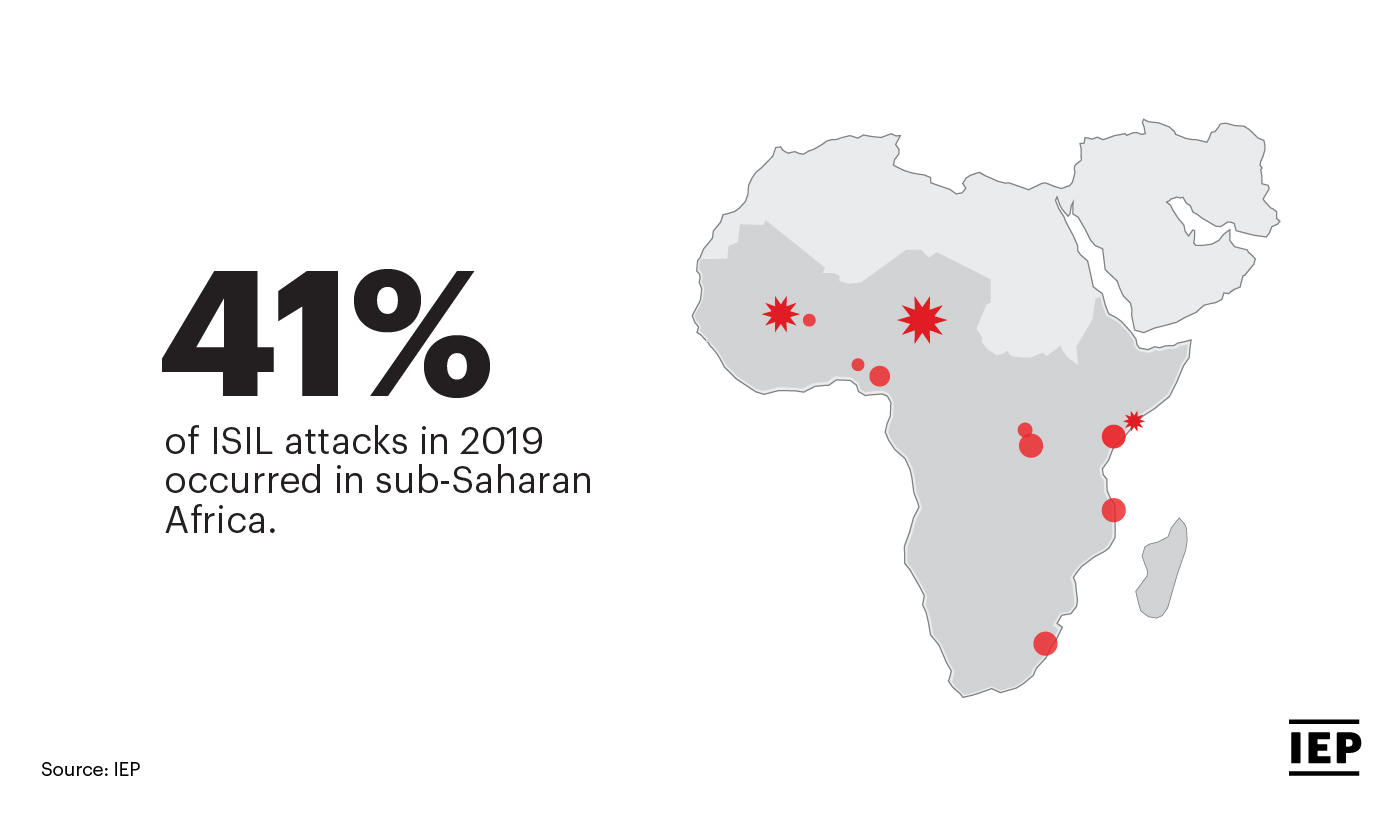 © Institute for Economy and Peace (IEP)
© Institute for Economy and Peace (IEP)
The GTI uses a number of factors to calculate its score, including the number of incidences, fatalities, injuries and property damage. The Taliban remained the world's deadliest terrorist group in 2019; however, terrorist deaths attributed to the group declined by 18%. ISIL's strength and influence also continued to decline. For the first time since the group became active, it was responsible for less than a thousand deaths throughout the year.
It is not yet known whether the attack on government buildings in Zagreb in 2020 will affect Croatia's rating on the index published next year. Although a lone endeavour, Croatian Prime Minister Andrej Plenković is the most high-profile commentator (of many) to have said the attack had elements of terrorism. The global increase in threat from domestic attacks is clearly evident within the rest of the most recent report.
In North America, Western Europe and Oceania, terrorist attacks by groups or individuals involved in far-right politics have increased by 250 per cent since 2014. They are now higher than at any time in the last 50 years. There were 89 deaths attributed to far-right terrorists in 2019. In the USA, white supremacists and other rightwing extremists have been responsible for 67% of domestic terror attacks and plots so far this year.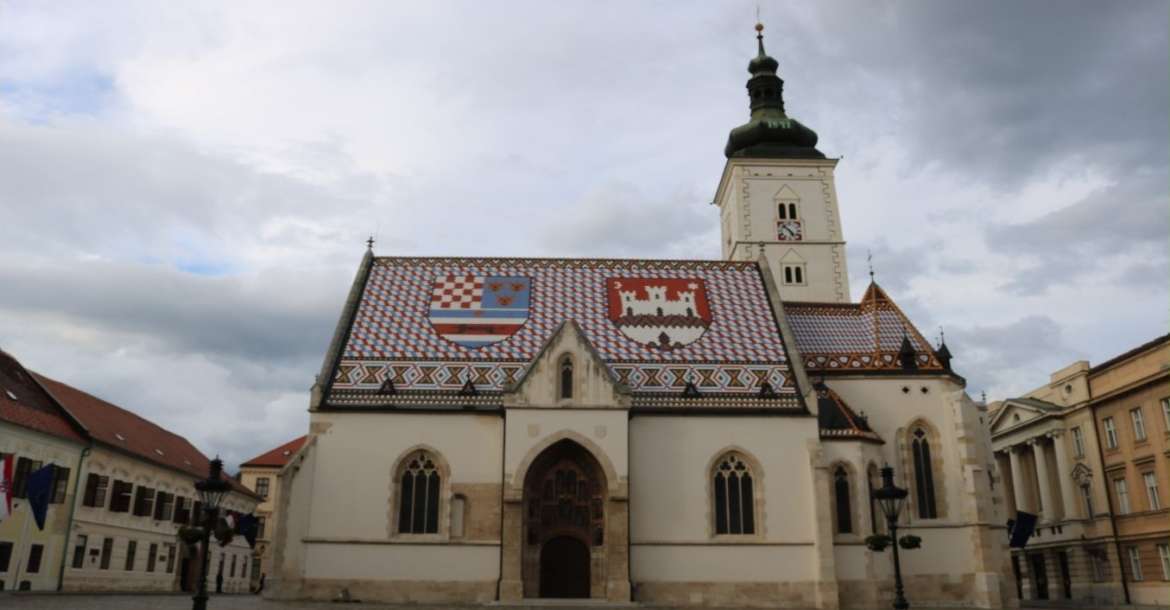 Saint Mark's Square in Zagreb, scene of a shooting in 2020, perpetrated by a Croatian citizen © Marc Rowlands
Saint Mark's Square in Zagreb, scene of a shooting in 2020, perpetrated by a Croatian citizen © Marc Rowlands
There have so far not been any terrorist actions attributable to fundamentalist Islamic groups in Croatia, unlike other European countries such as Spain, Germany, France and the UK. Eastern and southern Europe have experienced more civil unrest in direct correlation with the rise of far-right politics in the region. The popularity of far-right politics has risen ever since the 2008 financial crisis and has continued through the economic recession which followed.
Such trends are expected to continue because of the anticipated and extended economic downturn caused by COVID-19, which is likely to increase political instability and violence. Since COVID-19 was declared a global pandemic by the World Health Organization (WHO) in March 2020, preliminary data suggests a decline in both incidents and deaths from terrorism in most regions in the world. However, it is expected that the pandemic is likely to present new and distinct counter-terrorism challenges.
Of Croatia's neighbours, Bosnia and Herzegovina recorded the largest improvement in the whole of Europe with their 2019 index rating (followed by Austria and Sweden). Only two terrorist attacks were recorded in the country in 2019, compared to six the previous year. Slovenia also scored a 0.0 rating, meaning it can say that it, like Croatia is a completely safe country.
Plenkovic: Strong Economy Needs Predictable and Reliable Legal and Fiscal Framework
ZAGREB, September 22, 2020 - Prime Minister Andrej Plenkovic on Tuesday said that developing a reliable and stable legal framework and predictable fiscal framework had a key role in achieving a strong Croatia economy-wise.
"That is essential to have a stimulating business environment, production, investments and employment," Plenkovic said opening a conference organised by the Vecernji List daily and Podravka food manufacturer on tax policy in the function of boosting competitiveness of Croatia's economy.
The state needs to develop a system without legal and fiscal unknowns for entrepreneurs and that means a passable system and each new wave of tax reforms starts on the first day of the year, said Plenkovic.
He underscored that during the term of his cabinet more than HRK 9 billion had been released through tax cuts and currently 1.9 million citizens are exempt from income taxes which is twice as many as at the start of the first term of the government under his premiership.
The average wage has increased by HRK 1,150, which is five times more than in the period between 2011 and 2015, he recalled.
For the purpose of boosting purchasing power of households. VAT has been halved for basic food items and certain commodities and the non-taxable income has been increased, the premier said.
Continuation of tax cuts
Plenkovic underlined that tax cuts would continue in 2021, which would include reducing income taxes brackets: from 36% to 30% and from 24% to 20%, while profit tax for small enterprises from 12% to 10%.
During this term VAT on all food will be reduced from 25% to 13% but circumstances for that are still not ripe. Taxation of real estate transactions will be abolished too but not necessarily on 1 January 2021, he added.
All VAT tax payers will be able to choose whether they will pay it after an invoice has been paid, he added and digitisation will continue for tax and administration procedures.
Plenkovic underlined that a desirable Croatia for its residents is a country that is safe, resilient to crises, with macro-economic stability and a country with solved transitional problems.
Plenkovic underscored that the government is focused on four points, strengthening economic sovereignty which comprehends self-sufficiency in production and increased exports.
About €1billion to save jobs until end of year
Plenkovic said that the fight against Covid-19 showed how important and inevitable the state's role was because only it can ensure the necessary support with financial support schemes and on the other hand ensure financial stability of public finances.
Plenkovic underscored that as a result of the government measures, Croatia has not seen a huge increase in unemployment.
To date HRK 6.3 billion has been invested in job-retention measures and has saved about 600,000 jobs in 100,000 companies, he said.
By the end of the year that amount will have risen to about €1 billion in forms of grants to the private sector, added Plenkovic.
An important factor will be in European funds that Croatia will have at its disposal in the next four to seven years, he added.
For the latest travel info, bookmark our main travel info article, which is updated daily.
Read the Croatian Travel Update in your language - now available in 24 languages
AD Plastik Wins Golden Key Award As Best Large Exporter
ZAGREB, Sept 8, 2020 - Plastic car parts manufacturer AD Plastik wins Golden Key Award as the best large exporter in 2019, IT firm Infobip is the best medium-sized exporter and Jadran-una has been honored as the best small company, it was announced at the 15th Croatian Exporters Convention on Tuesday.
Addressing the convention, Prime Minister Andrej Plenkovic congratulated the exporters, saying that commodity exports had been rising steadily for the past 10 years and their share in GDP had increased from 16.7% to 28.5%.
He said that only 15% of Croatian companies generated revenues on foreign markets, while they employed 51% of the active workforce. He added that these companies place over 60% of their investments in research and development, generating three-quarters of total profits and nearly four-fifths of total investment in research and development in Croatia.
Speaking of boosting the export-oriented industry, Plenkovic cited reindustrialization and strong support to enterprises in using smart and clean technologies, greater use of energy from renewable sources, and digital transformation.
"That is the path to increasing competitiveness," the prime minister said, adding that the government's focus would be on developing sectors with great growth potential such as information and communication technologies, pharmaceuticals, biotechnology, pure technologies, such as solar and hydrogen, and new technologies, including 3D printing, nanotechnology, and robotics.
He also pledged further investment in education, railways, and broadband internet infrastructure.
"Our ambition is to create 100,000 jobs over the next four years, that is before the end of our term," Plenkovic said.
He highlighted two objectives of importance for exporters - the adoption of the euro and entry into the Schengen area.
The backbone of the Croatian economy
The head of the Croatian Exporters Association, Darinko Bago, praised the government for how it was handling the crisis caused by the global coronavirus pandemic, citing the government's social sensitivity and efforts to preserve jobs and help the tourist industry.
"Exporters are the best that Croatia has, they are the backbone of the Croatian economy," Bago said, adding that exporters expected the government to continue to be socially sensitive, but also to intensify localization and regionalization.
For the latest travel info, bookmark our main travel info article, which is updated daily.
Read the Croatian Travel Update in your language - now available in 24 languages
Croatia Among EU Countries With Sharpest GDP Declines In Q2
ZAGREB, Sept 8, 2020 - Croatia is among the EU countries with the sharpest GDP declines in Q2 of this year compared with the previous quarter, according to Eurostat's estimate released on Tuesday.
In the second quarter of 2020, compared with the previous quarter, seasonally adjusted GDP decreased by 11.4% in the EU and by 11.8% in the euro area. In the first quarter of the year, GDP had declined by 3.3% in the EU and by 3.7% in the euro area.
Compared with the second quarter of 2019, seasonally adjusted GDP fell by 13.9% in the EU and by 14.7% in the euro area, following declines of 2.7% and 3.2% respectively in the first quarter.
Spain sees by far the sharpest drop
All the EU member states recorded declines in economic activity in the second quarter, both month on month and year on year.
The sharpest quarterly decline, of 18.5%, was recorded in Spain, followed by Croatia (-14.9%), Hungary (-14.5%), Greece (-14.0%), Portugal (-13.9%) and France (-13.8%). In the first quarter of the year, Croatia observed a GDP decline of 1.3% quarter on quarter.
Germany, the EU's strongest economy, saw its GDP shrink by 9.7%.
The lowest quarterly declines of GDP were observed in Finland (-4.5%), Lithuania (-5.5%), and Estonia (-5.6%).
Compared with the second quarter of 2019, the largest GDP declines were recorded in Spain (-22.1%), France (-18.9%), and Italy (-17.7%). The German economy contracted by 11.3%.
Croatia's GDP fell by 15.1% compared with the second quarter of last year, while in the first quarter of this year it had grown by 0.3% year on year.
The lowest annual declines were observed in Ireland (-3.7%) and Lithuania (-4.0%).
A heavy blow to employment
The pandemic and measures put in place to contain the spread of the infection dealt a heavy blow to employment both in the EU and the euro area, resulting in the sharpest declines in the number of people employed in both zones since Eurostat started tracking data.
The number of employed persons decreased by 2.7% in the EU and by 2.9% in the euro area in the second quarter of 2020 compared with the previous quarter. In the first quarter of this year, employment had declined by 0.2% in the EU and by 0.3% in the euro area.
Compared with the second quarter of 2019, employment fell by 2.9% in the EU and by 3.1% in the euro area, after increasing by 0.4% in both zones in the first quarter.
For the latest travel info, bookmark our main travel info article, which is updated daily.
Read the Croatian Travel Update in your language - now available in 24 languages
EconMin: As Much EU Funds as Possible Should be Channelled to Economy and Private Sector
ZAGREB, September 4, 2020 - Minister of Economy and Sustainable Development Tomislav Coric said on Friday that he would try to steer as much funds from the EU aid package of €22 billion intended for Croatia as possible to the economy and private sector.
Coric was addressing participants at the Croatian Money Market conference in Opatija.
He said that he had heard from representatives of the real sector in which direction they thought Croatia's recovery should be going.
"We all share a certain dose of optimism about what is to come. The question of distribution of European funds from the EU envelopes of the 2021-2027 operational programme and from the recovery and resilience programme, will be a key issue. The ministry and government intend to direct the majority of those funds towards the economy," Coric said.
He added that it is necessary to improve the domestic economy's competitiveness and productivity in a number of industries, digitise the economy and improve the trade balance by reducing the deficit and boosting GDP growth.
Asked by reporters how much of the €22 billion was available to the private sector, Coric said that that has not been defined yet because neither of the two envelopes had been fully defined at the European level.
"We will probably have to wait for a few months for the answer to that question. Recovery plans need to be officially submitted to the European Commission by April next year and the major part of the funds will be based on that," he said and added: "It is important that already now we allocate as much money as possible to the private sector. There is no alternative. We have to be as strong as possible so that we can return to the pre-crisis level," said Coric.
Responding to reporters' questions, Coric said that the public debt would not explode and that a brilliant job had been done with regard to settling solvency and the government's liabilities for 2020.
For the latest travel info, bookmark our main travel info article, which is updated daily.
Read the Croatian Travel Update in your language - now available in 24 languages
FinMin: Full Economic Recovery Expected in 2022
ZAGREB, September 4, 2020 -This year's economic decline will not be as sharp as originally estimated, a full recovery is expected by 2022, and our goal it to leave the crisis behind as soon as possible, Finance Minister Zdravko Maric said on Friday in Opatija, where he attended the Croatian Money Market conference.
The government had earlier projected that GDP would drop by 9.4% in 2020, and when asked by reporters whether the drop would be lower than 9% according to the new projection, Maric said that the drop on the year would still be marked but lower than originally projected.
He said that they would report on it in a government session in two weeks and that the projection would be the basis for planning some measures and next year's budget.
Maric underscored that despite the depth of the crisis, Croatia had been much more prepared for it than it had been in 2008, in terms of macroeconomics. He noted that we need to leave the crisis behind us as soon as possible as last time it took us 11 years to recover and only in 2019 did we manage to reach the level of GDP from 2008.
He said that the response to the coronavirus-caused crisis had been timely and adequate, underscoring that the focus was on job retention.
Minister Maric also said that the Next Generation EU recovery instrument could be a great opportunity for Croatia in this challenging situation as it can be used not only for economic recovery but also for resilience.
Asked when those EU funds would be available, Maric said that implementation would fully commence in the second half of 2021 but that part of the funding would be available to Croatia in the form of advance payments before that.
"Next year, Croatia will receive an advance payment of at least 10%, or about HRK 3 billion, and that can be used for these measures and will be part of the budget," he said.
Maric mentioned the Solidarity Fund in connection to Zagreb's post-earthquake reconstruction as an example of an advance payment.
"We are speaking of €500 million, possibly even up to €700 million. A few days ago we received the biggest payment yet from the Solidarity Fund, of €89 million," he said.
Commenting on yesterday's meeting with US Ambassador to Croatia Robert Kohorst, who presented the government with a draft agreements on double taxation avoidance, Maric recalled that the basic aim of these agreements was to protect citizens and entrepreneurs from double payments of tax.
As for the coronavirus crisis, Maric said that everything was under control.
"We are rational, we are implementing measures, we are endeavouring to react in time and adequately. There are a lot of challenges, some activities are still affected and measures have continued for some sectors. We all need a healthy and positive climate, without irrational and unrealistic promises and we all need to act together," he said.
For the latest travel info, bookmark our main travel info article, which is updated daily.
Read the Croatian Travel Update in your language - now available in 24 languages
PHOTOS: Pula Amphitheatre and Zagreb Arena Lit Red for Events Industry
September 3, 2020 - Three of Croatia's most internationally famous venues in the events industry were lit in spectacular red on Monday. Pula amphitheatre, Zagreb Arena and Fort Punta Christo were bathed in light from sunset until after dark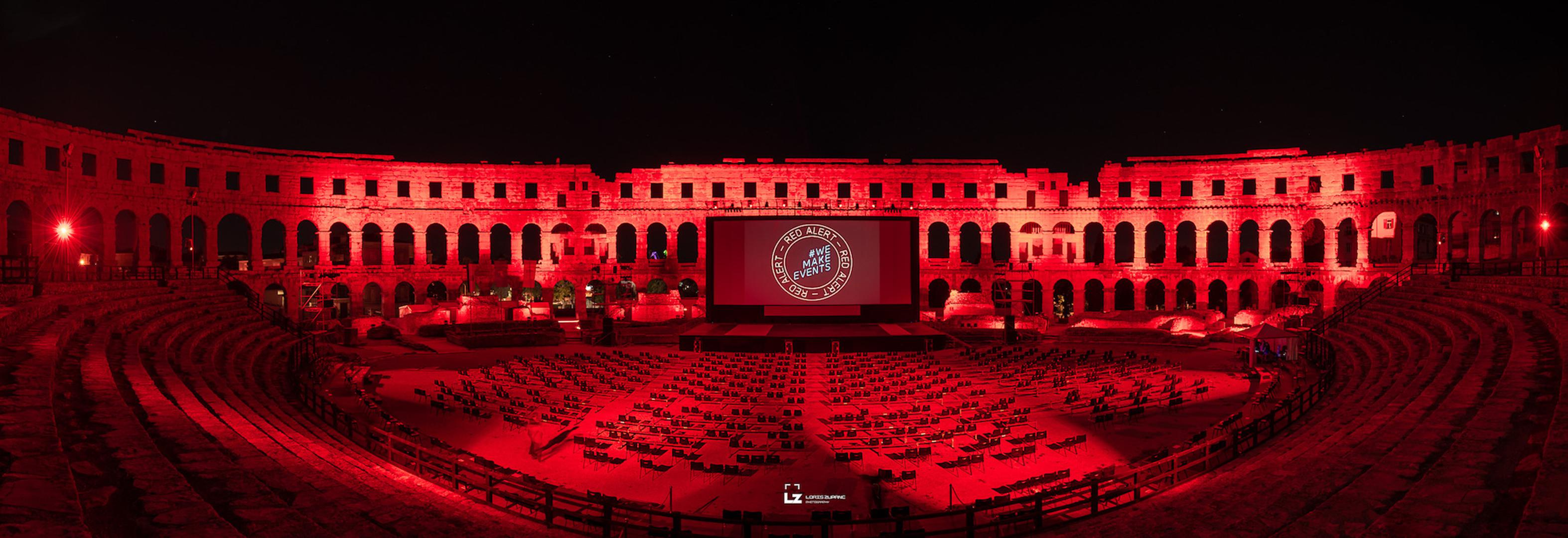
Three of Croatia's most internationally famous venues used by the events industry were lit in spectacular red on Monday. Pula amphitheatre, Zagreb Arena and Fort Punta Christo, also in Pula were bathed in light from sunset until after dark.
Though the change in appearance was enjoyable and visually impressive, the action was undertaken to send a strong message. It was part of a worldwide campaign to highlight the effects of Coronavirus on the events industry and those who work within it.
Some of the most famous historical buildings, concert venues and event halls in the world joined the Red Alert campaign and were similarly lit on the same night.
Large public events have been put on hold over most of the world under epidemiological guidelines. Seating arrangements in theatres, conference halls, sports and music halls are simply not compatible with social distancing regulations – many such venues could not make a profit by holding events at 50% capacity.
This has affected millions around the world who work in the events industry, from musicians and performers to technicians, bookers, agents, the media, PR representatives, venue management and general staff. Freelancers operating within the events industry are some of the hardest hit and have had all of their income sources removed completely. Many who operate in the events industry are highly trained and skilled, so diversifying into other industries can be problematic.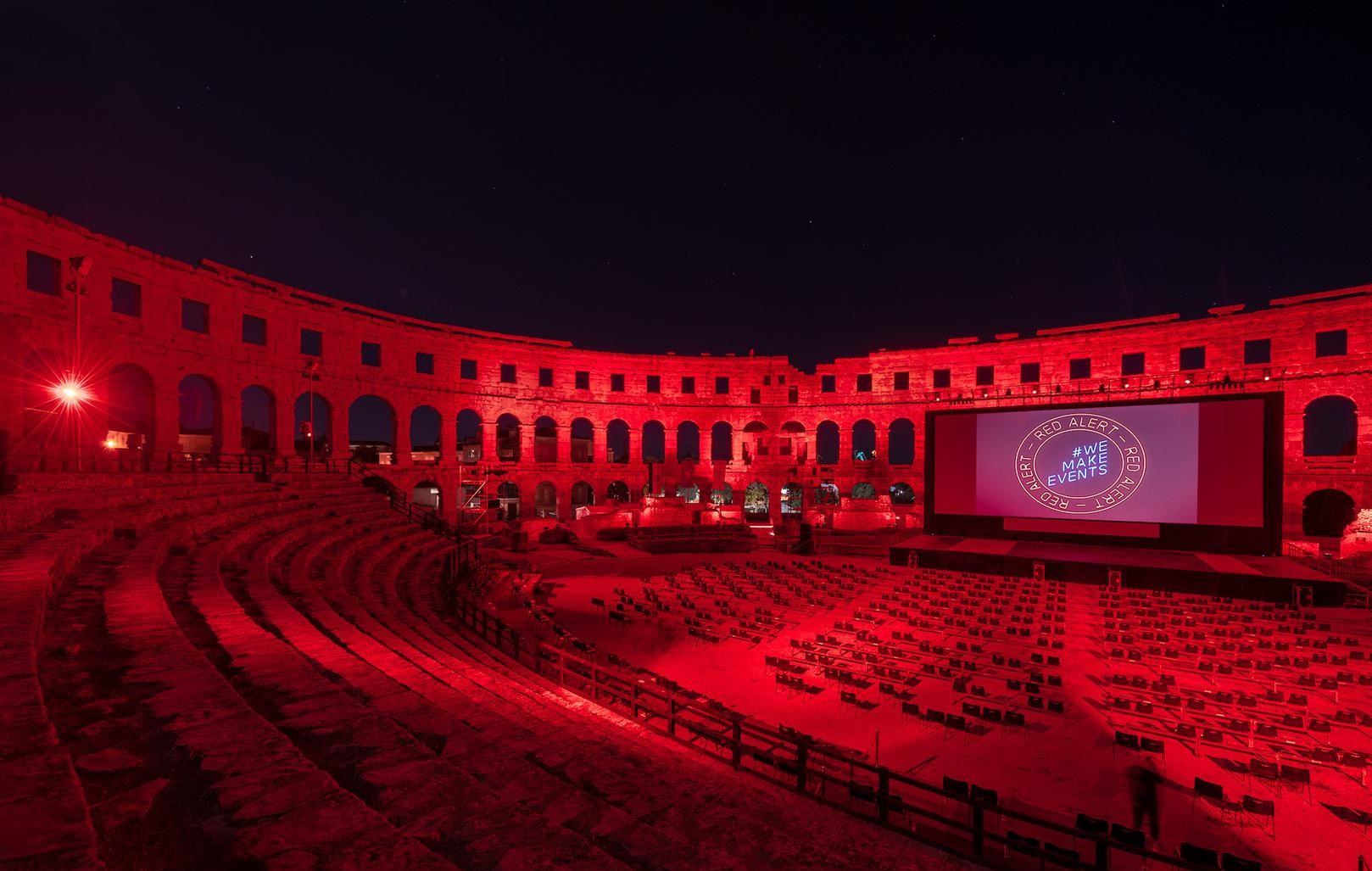
Pula amphitheatre (also known as Pula Arena) is a massively popular open-air venue in warmer months. It holds spectacular opera, ballet and classical music events as well as hosting a film festival. Like Zagreb Arena, it attracts some of the biggest names in pop and rock music. Fort Punta Christo has become famous all over Europe and further over the last decade, thanks to the internationally renowned Outlook and Dimensions festivals. Those events were supposed to take place in Tisno, at The Garden festival site. But, along with seven further festivals due to be held there this year, they chose to cancel in order to safeguard the health of their attendees and locals.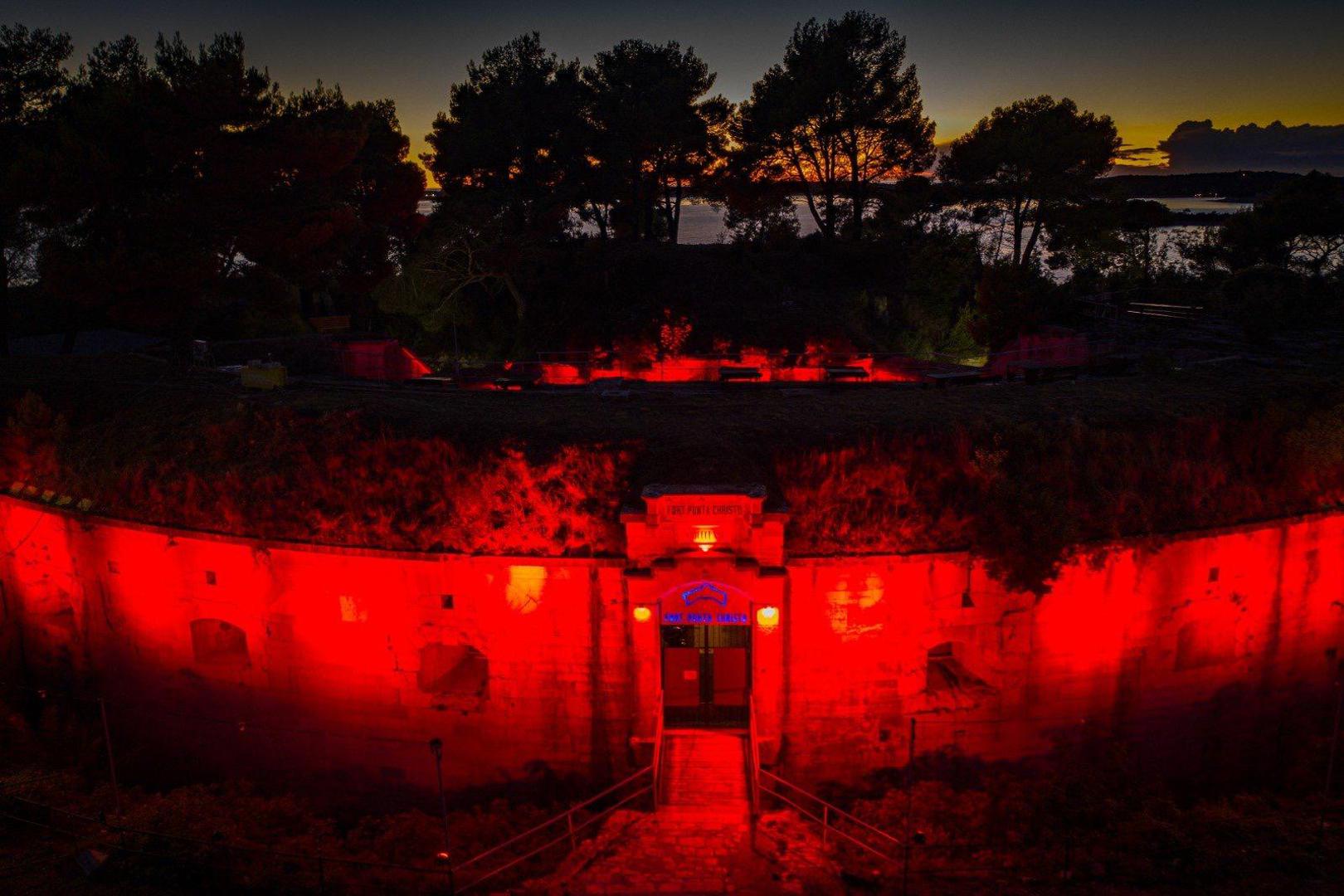
Fort Punta Christo in Pula is widely known as a host site for international music festivals
The Croatian events industry alone is comprised of 2000 business entities, has more than 12,000 employees, and annually generates HRK 4.5 billion. Autumn/winter 2021 is the soonest estimated point at which large scale events could return to normal. The Red Alert campaign has been undertaken to highlight the plight of the events industry as many sections within it face total collapse if deprived of work until then. 
All photos © Red Alert
For the latest travel info, bookmark our main travel info article, which is updated daily.
Read the Croatian Travel Update in your language - now available in 24 languages
Economic Expectations for Croatia Significantly Improve in August
ZAGREB, August 28, 2020 - Economic expectations in Croatia improved significantly in August, primarily due to the hospitality sector and in line with trends in the European Union and the euro zone, a report released by the European Commission on Friday notes.
The Economic Sentiment Indicator (ESI) for Croatia increased by 7.7 points in August compared to July, reaching 90.9 points, after slipping by 1.6 points in July, the commission's regular business and consumer survey for August shows.
That is a significant improvement compared to the record low 72.3 points in April when lockdown measures were in full swing due to the coronavirus epidemic.
The best improvement in confidence in August by far was in the services sector which is evident in the jump of 19.3 points in the services confidence index.
Industry confidence and retail confidence too increased by 5.3 and 4.3 points respectively.
A mild improvement was recorded in the consumer confidence index, which increased by 2.2 points.
Construction confidence was an exception, with confidence falling by 3.7 points.
Managers expect that they will continue to employ new workers, with the Employment Expectations Indicator recording an increase of 2.1 points compared to July, when it also increased by as many points, the commission's report says.
For the latest travel info, bookmark our main travel info article, which is updated daily.
Read the Croatian Travel Update in your language - now available in 24 languages
INA's Layoffs Decision Is Business Decision, Says Minister
ZAGREB, Aug 26, 2020 - Economy Minister Tomislav Coric said on Wednesday INA's decision to lay off 250 workers was a business decision, and that INA recently submitted a proposal to the Strategic Projects Commission to declare the Sisak biorefinery a strategic project.
Asked by the press to comment on the announcement that 250 INA workers would lose their jobs, Coric said there was no satisfaction if people lost their jobs at the end of a process of transformation, but that INA's business decisions of several years ago were going in that direction.
"The thing that we can express satisfaction about, is that the workers are leaving with relatively favorable severance packages."
The oil company said earlier this week that, given the circumstances of operating during a pandemic, the INA Group began organizational changes and that the restructuring would cover a maximum of 250 workers. This news has caused great concern in the town of Sisak and the Sisak refinery, whose workers have warned that the layoffs would halve the refinery's staff.
Asked about the layoffs, Coric said the company's direction was its decision and that the global oil business was in trouble because of the coronavirus and other circumstances.
He said he was pleased that INA's proposal to declare the biorefinery in Sisak a strategic project, was recently submitted to the Strategic Projects Commission.
We are pleased about that because I think that the direction which INA is taking in fact - a sustainable, green direction - is the right one, Coric added.
INA council to discuss Lazard's final report soon
The minister said the government received Lazard's final report on INA. The company is the government's advisor on the possible buy-back of MOL's stake in INA.
He added, however, that the make-up of the council on negotiations with MOL on the possible purchase changed last week. "In the weeks ahead, that report will be presented to the council members and then we will go a step further."
Asked if the political decision to buy back the stake was still on, Coric said the government decided to do that in 2016 and that the decision was confirmed in the HDZ's platform for this year's parliamentary election.
"We will try to enter into talks with the other side, present our offer and try and restore Croatia's ownership of INA."
A member of the press remarked that consultants said the buyback was not worth it. Coric said that he did not have that information.
For the latest travel info, bookmark our main travel info article, which is updated daily.
Read the Croatian Travel Update in your language - now available in 24 languages


